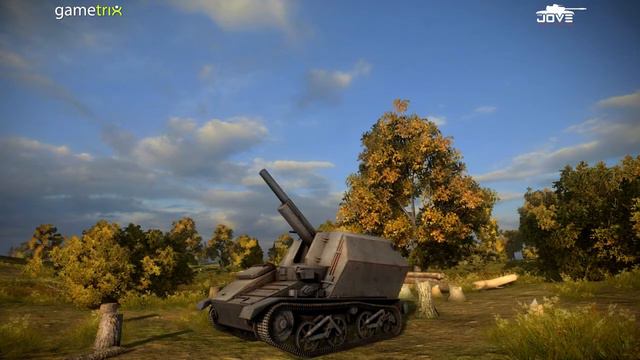In the vast, ever-evolving landscapes of World of Tanks, where armored behemoths clash in tactical warfare, a single, often divisive class of vehicle consistently sparks fervent debate: Self-Propelled Guns, affectionately (or perhaps, exasperatedly) known as Artillery, or “Arta.” The sentiment, “Arta is everything,” isn`t merely hyperbole; it encapsulates a persistent reality on the virtual battlefield, where these indirect fire specialists wield an influence that is both undeniable and deeply controversial.
The Enduring Controversy: A Love-Hate Relationship
Artillery has been a cornerstone of World of Tanks gameplay since its inception, intended to provide strategic support, break stalemates, and punish heavily armored, static targets. However, its implementation has frequently led to polarizing opinions. For the player controlling an SPG, it`s a game of calculated risk, map awareness, and precise timing, offering the satisfaction of influencing a distant engagement. For the recipient of an artillery shell, however, it can be a sudden, disorienting, and often frustrating experience – a significant chunk of health vanishing from seemingly nowhere, followed by a concussive stun that leaves their tank vulnerable and ineffective.
This dichotomy lies at the heart of the “Arta is everything” phenomenon. When a single shell can drastically alter a tank`s combat effectiveness, dictate a flank`s collapse, or even deliver a knockout blow from across the map, it`s difficult for players not to feel its pervasive presence. This isn`t just about raw damage; it`s about the psychological impact of being targeted from beyond the line of sight, adding an element of unpredictability that some find exhilarating and others find infuriating.
The Mechanism of Influence: Stun, Damage, and Area Denial
Modern artillery in World of Tanks, post-rebalance, primarily focuses on a combination of moderate damage and the “stun” mechanic. Unlike the older, high-alpha one-shot capabilities, current SPGs aim to temporarily disable enemy crews, reduce their view range, and slow down their reload and movement. This isn`t necessarily a direct kill, but rather a sophisticated form of area denial and target weakening. A perfectly placed shell can:
- Disrupt a Push: Stun a leading heavy tank, allowing allies to reposition or gain an advantage.
- Expose Vulnerabilities: Temporarily cripple a tank`s ability to aim or escape, making it an easier target for direct fire.
- Alter Positioning: Force players out of advantageous hull-down positions, driving them into the open.
While the direct damage numbers might not always be stellar, the utility provided by a skilled artillery player can be game-changing. This nuanced impact is why “Arta is everything” often refers to its *strategic weight* rather than just its raw firepower.
The Developer`s Dilemma: Balancing the Unbalanceable?
Wargaming, the developers behind World of Tanks, have grappled with artillery balance for years. Numerous patches have attempted to fine-tune SPG performance, aiming to make them impactful without being overly oppressive. From reducing alpha damage to introducing the stun mechanic, each iteration seeks that elusive sweet spot where artillery feels relevant but not dominant. It`s a challenging act of calibration, given the unique mechanics of indirect fire. The goal is to retain artillery`s tactical role as a counter to static defenses and entrenched positions, without allowing it to unilaterally decide the outcome of every engagement. The ongoing adjustments are a testament to the class`s complex nature and its significant role in the game`s ecosystem.
The challenge with artillery is not merely its damage output, but its fundamental ability to bypass traditional armor and line-of-sight defenses. This makes its role inherently different and often perceived as `unfair` by those who rely on conventional tank combat.
Impact on the Meta: Adapting to the Skies
The presence of artillery profoundly shapes the game`s meta. Players are often compelled to consider SPG threats when choosing tanks and executing strategies. Highly armored, slow tanks, which might otherwise dominate front lines, become tempting targets for artillery, forcing them to adopt more cautious approaches or seek cover diligently. Conversely, fast, mobile tanks that can quickly relocate or deny artillery firing solutions gain an advantage. Even map design is influenced, with developers often incorporating more hard cover and “arty-safe” zones to provide relief from indirect fire.
This continuous adaptation ensures that “Arta is everything” isn`t just a lament, but also a strategic imperative. Ignoring artillery threat is done at one`s own peril, making situational awareness of SPG positions and reload times a crucial skill for any serious World of Tanks player.
Conclusion: An Enduring Force
Whether you love them, hate them, or simply tolerate them, artillery remains an indelible and incredibly influential part of the World of Tanks experience. The phrase “Arta is everything” encapsulates its enduring impact – a force that dictates movement, influences decisions, and often determines the flow of battle. As Wargaming continues its quest for perfect balance, one thing remains clear: the sky-high threat of an incoming shell will continue to shape the armored warfare, ensuring artillery’s unique and controversial legacy endures.

